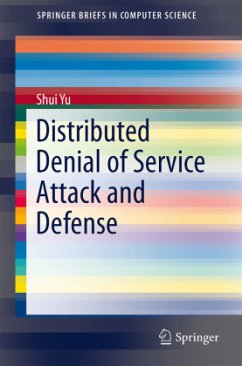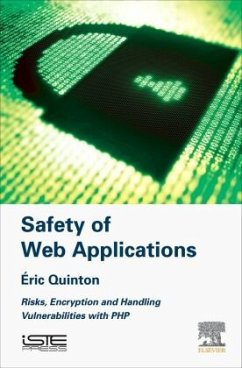
Distributed Denial of Service Attacks
Analysis of Defenses
Versandkostenfrei!
Versandfertig in 6-10 Tagen
32,99 €
inkl. MwSt.

PAYBACK Punkte
16 °P sammeln!
Distributed Denial of Service (DDoS) attacks areattempts to overwhelm a computer system in order todeny access by legitimate users. They are generallyunstoppable, but there is a good deal of on-goingresearch on methods to reduce their negative effects.This paper will deal with the design of a model thatsimulates such an attack. The simulation model isthen used to study possible ways to defend againstthese attacks. Three experiments are run: 1) using apriority queue to sort messages from clients based onhow many connections they have open on the server; 2)limiting the number of connections each...
Distributed Denial of Service (DDoS) attacks are
attempts to overwhelm a computer system in order to
deny access by legitimate users. They are generally
unstoppable, but there is a good deal of on-going
research on methods to reduce their negative effects.
This paper will deal with the design of a model that
simulates such an attack. The simulation model is
then used to study possible ways to defend against
these attacks. Three experiments are run: 1) using a
priority queue to sort messages from clients based on
how many connections they have open on the server; 2)
limiting the number of connections each client can
create; and 3) having the server forcefully delete
the oldest established connection, whenever its
connection table becomes full. Results show that
method 1 is totally ineffective while method 2
somewhat improves the overall performance of the
system. However, method 3, combined with method 2,
produces significantly improved performance against a
DDoS attack.
attempts to overwhelm a computer system in order to
deny access by legitimate users. They are generally
unstoppable, but there is a good deal of on-going
research on methods to reduce their negative effects.
This paper will deal with the design of a model that
simulates such an attack. The simulation model is
then used to study possible ways to defend against
these attacks. Three experiments are run: 1) using a
priority queue to sort messages from clients based on
how many connections they have open on the server; 2)
limiting the number of connections each client can
create; and 3) having the server forcefully delete
the oldest established connection, whenever its
connection table becomes full. Results show that
method 1 is totally ineffective while method 2
somewhat improves the overall performance of the
system. However, method 3, combined with method 2,
produces significantly improved performance against a
DDoS attack.












